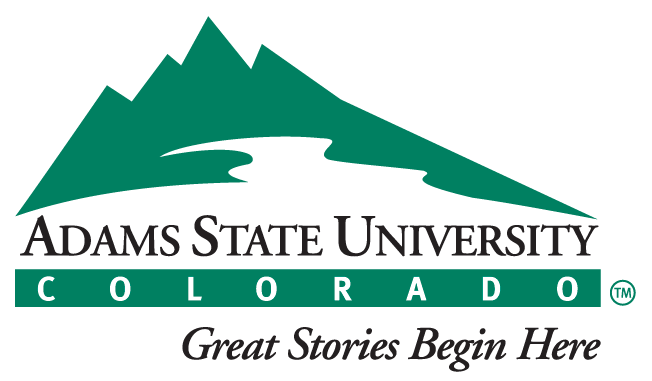Are you getting started teaching at Adams State University? Are you in the process of designing a new course or refreshing a course you haven’t taught in a while? This page includes resources, tips, and ideas for teaching Grizzlies.
Teaching at a Hispanic-Serving Institution
In 2000, Adams State University was designated Colorado’s first Hispanic-Serving Institution (HSI). The U.S. Department of Education defines an HSI as enrolling at least 25% Latino/a, Chicano/a, Mexican-American, and Hispanic-identifying students. Gina Garcia (2019) has described Latinx-serving organizational identities that “produce an equitable number of outcomes for Latinx students” (p. 32). Our Office of Title V Initiatives, for example, leads programs geared to support Latinx students from cornerstone to capstone and beyond.
Given the rich cultural, linguistic, and literate histories of our students, it’s integral to center equity and justice in how we approach the design, teaching, and assessment of courses across departments at Adams State University. As Alim & Paris (2014) explain in Culturally Sustaining Pedagogies, culturally sustaining pedagogies, “positions dynamic cultural dexterity as a necessary good, and sees the outcomes of learning as additive rather than subtractive, as remaining whole rather than framed as broken, as critically enriching strengths rath than replacing deficits” (p. 1).
Put a different way, given Adams State University’s positionality as a Hispanic Serving Institution, it’s critical that we (1) challenge deficit framing around Latinx students in our curriculum and pedagogy (Garcia, 2019) (2) honor the complex linguistic, cultural, and literate histories of Latinx students as assets (Alim & Paris, 2017), and (3) acknowledge variation within the Latinx community and how intersectional identities (e.g., gender, class, national belonging, language, etc.) shape educational opportunities, experiences, and outcomes (Aguilar-Smith, 2021).
Strategies:
Some strategies for teaching at Adams State are listed below. Please remember that these are examples of how you might center asset-based instruction in your classroom, but in no way is this list exhaustive.
- Building trust by getting to know your students through a first-day information sheet, a Google Form, or assigning a “This I Believe” writing prompt
- Invite students to office hours, host small group conversations, and selectively share important information and experiences with your students
- Invite your students to set growth-mindset goals for the semester and discuss the differences between growth mindsets and fixed mindset
Further Reading:
- “We Are An Hispanic Serving Institution,” Adams State University
- Aguilar-Smith, S. (2021). Seeking to serve or $erve?: Hispanic-Serving Institutions’ race-evasive pursuit of racialized funding. AERA Open, 7, 23328584211057097.
- Paris, D., & Alim, H. S. (Eds.). (2017). Culturally sustaining pedagogies: Teaching and learning for justice in a changing world. Teachers College Press.
- Garcia, G. A. (2019). Becoming Hispanic-serving institutions: Opportunities for colleges and universities. Johns Hopkins University Press.
- Integrative Learning at a Hispanic-Serving Institution: Reflecting on Cultural Assets – What’s Next
Building an Accessible Syllabus
The syllabus is the groundwork for any course. It provides an overview of learning goals, expectations, and learning experiences. Often, syllabi contain a long list of policies and expectations. Since they are students’ first touch-point with you as their instructor, we recommend that your syllabi represent your commitments and goals.
One way to think about syllabus design is to center the themes of Universal Learning Design (UDL), which emphasizes multiple means of engagement, representation, and action and expression.
Strategies:
By providing different ways of engaging students, you might include:
- Visual representations, such as icons, pictures, and/or infographics of important information Include alt text when you include your
- Use headings and subheadings to organize your document (this makes screen readers better able to read and navigate through a document)
- Use hyperlinks in the text to important websites, readings, and resources
- Include bullets, numbered lists, and tables when appropriate
- Consider using Dyslexie Font or Beeline Reader to improve readability
- Write in simple, concise sentences, emphasizing positive over punishing language (e.g., “I hope you actively participate in this course . . . because I have found it is the best way to engage you in learning” instead of “Come prepared to actively participate in this course. This is the best way to engage you in learning”)
- Include information about you, your goals and values as a teacher, and descriptions about each assignment that align connections to course learning outcomes as well as institutional requirements
Further Reading:
Designing Effective Assignments
The Meaningful Writing Project has analyzed how graduating seniors from three universities perceive their meaningful writing experiences. They found: (1) The majority of students noted that meaningful writing projects were something they had never done before but that they felt would be connected to the writing they would do as professionals; (2) Also meaningful were writing projects that were connected to students’ lives and interests beyond school, as well as writing projects that helped them learn or explore course content more deeply; and (3) a key implication for teaching is that meaningful writing projects frequently had requirements but also offered students considerable choice in topic or approach.
In Engaging Ideas, Bean & Melzer (2023) identify several features of an effective writing assignment prompt:
- Problem & Context: Identifies a stated or implied disciplinary problem within a course context
- Purpose & Audience: Defines the purpose of the assignment (e.g., inform, analyze, persuade, reflect, explore) for a target audience
- Professional and Disciplinary Expectations: Specifies specific genre expectations, documentation style, and rhetorical moves as part of expectations of a scholarly or professional community
Strategies:
By designing specific, authentic assignments you might:
- Identify what skills and knowledge students need to complete the assignment
- Build lessons that offer space for students to practice skills in a low-stakes way
- Sequence large assignments with smaller check-in moments, such as proposals, progress reports, outlines, and peer reviews of in-progress assignments
- Provide examples from professionals and students (with their permission) to discuss effective elements
Further Reading:
- The Meaningful Writing Project
- Engaging Ideas: The Professor’s Guide to Integrating Writing, Critical Thinking, and Active Learning in the Classroom
Effective and Actionable Feedback
Feedback is a part of a pedagogy and curriculum, and it is necessarily future-facing. As teachers, the feedback we give is informed by a variety of factors (e.g., program goals, genre conventions, learning styles, relationships, assignment requirements, and so on). Feedback doesn’t just check if someone has done the thing that they were supposed to do, but looks forward to what they might do in the future (e.g., dissertations, articles, white papers, etc.). In this vein, feedback does not look the same for each person or at each stage of the process. You might think of feedback as a mechanism for learning in a variety of ways throughout a project.
One approach to providing effective feedback is to employ the describe-evaluate-suggest model, developed by Bill Hart-Davidson and Eli Review:
- Describe – say what you see as a reader
- Evaluate – explain how the text meets or doesn’t meet the criteria established in the prompt
- Suggest – offer concrete advice for improvement
Strategies
To provide the most effective feedback:
- Try to focus on 1 or 2 areas of improvement and 1 or 2 areas of excellence
- Develop a friendly coaching tone in your feedback
- Frame your feedback toward learning and growth, being transparent about your criteria
- Build in lessons about taking up feedback in productive ways
- If possible, connect your feedback to an in-class activity of mini-assignment so students can make a concrete revision plan
- Limit comments on sentence-level errors, instead identify patterns and strategies for improvement
- Remember to honor and amplify students’ diverse language practices
Further Reading
- https://elireview.com/content/students/feedback/#section_two
- https://elireview.com/2016/08/03/describe-evaluate-suggest/
- Engaging Ideas: The Professor’s Guide to Integrating Writing, Critical Thinking, and Active Learning in the Classroom
Active Learning & Metacognition Strategies
When designing individual lesson plans, workshops, or programs, it is useful to build active learning strategies for students to make sense of, apply, and reflect on what they are learning. While threads of research have shown the connections between student learning and higher course assessment, newer research has demonstrated that students perceive that they learn more in a lecture-heavy course. Additionally, it’s important to provide students with multiple options for engagement as some high-intensity social activities can be a barrier for access for some students.
Strategies
- Build lessons with activities that allow students to engage, apply, and connect with content
- Invite low-stakes ways to engage students with each other, such as think-pair-share, independent writing, or writing a takeaway on the board
- Connect material to students’ own life experiences by bringing in current events or case studies
- Use active learning to assess what such as polls, exit tickets, and so on
- Use tools like https://teaching.tools/ to build a differentiated lesson
Further Reading
- Active learning increases student performance in science, engineering, and mathematics
- Active Learning Library – Teaching Tools
- Fink, “Activating Learning: Teaching for Metacognition”
- Barber, “Making Metacognition Part of Student Writing”
- Tinberg, “Metacognition is not cognition”
- DePaul, “Activities for Metacognition”
Important Links and Resources
- Student One-Stop
- Faculty One-Stop
- Academic SOS
- From the Classroom to the Web
- Research Guides
- Academic Advising
- Career Services
- Counseling Center
- Co-Curricular Recreation and Engagement
- Learning Resources – Tutoring
- Grizzly Testing and Learning Center
- Culture – Student Life
- CTIR Professional Development



